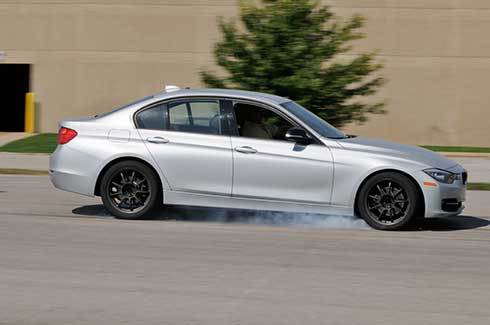Better Safe Than Sorry
 You are driving a car at
9
0
km/h
. Suddenly, you see a large sinkhole
2
0
0
m
ahead on road. You quickly brake at the time you see the sinkhole with a constant deceleration of
1
.
2
5
m/s
2
. What will happen to your car?
You are driving a car at
9
0
km/h
. Suddenly, you see a large sinkhole
2
0
0
m
ahead on road. You quickly brake at the time you see the sinkhole with a constant deceleration of
1
.
2
5
m/s
2
. What will happen to your car?
Assume the sinkhole is really big, so the car doesn't fly over it.
This section requires Javascript.
You are seeing this because something didn't load right. We suggest you, (a) try
refreshing the page, (b) enabling javascript if it is disabled on your browser and,
finally, (c)
loading the
non-javascript version of this page
. We're sorry about the hassle.
4 solutions
Nice solution :)
I solve with 9km/h,
Great solution my friend! However, it is 90km/hr, not 90km/s! Haha I just like to point things out, sorry.
Log in to reply
LOL, 90km/s would mean the car just flew over the sinkhole. :P
Log in to reply
90km/s LOL it is almost 8 times greater than earths escape velocity.
Well, that is akward
Nice question, but it's 90km/h not 9 km/h please correct it.
u = 9 0 k m / h = 9 0 ∗ 1 8 5 m / s = 2 5 m / s
v = 0 m / s
a = − 1 . 2 5 m / s 2
Using the equation of motion : v 2 = u 2 + 2 a s → v 2 − u 2 = 2 a s → s = 2 a v 2 − u 2
Putting the values, s = 2 . 5 6 2 5 − 0 → s = 2 5 0 m (50 m more than where the car should have stopped to get saved.)
So the car will fall into the sinkhole.
90 km/h = 25m/s.
Let
x
= time in seconds, and let the function
f
(
x
)
= the speed of the vehicle at time x.
If the vehicle is traveling at 25m/s, applies the breaks at
x
=
0
, and decelerates at a rate of
−
1
.
2
5
m
/
s
2
,
Then
f
(
x
)
=
2
5
−
1
.
2
5
x
, and
f
(
2
0
)
=
0
(speed reaches zero at 20 seconds).
if
f
(
x
)
is our speed at time x, then
F
(
x
)
is our total distance traveled at time x.
so
F
(
x
)
=
∫
f
(
x
)
d
x
=
2
5
x
−
.
6
2
5
x
2
.
We know the speed reaches zero at 20 seconds, so
F
(
2
0
)
=
2
5
0
(vehicle travels 250 meters before stopping).
Therefore it falls in the hole.
Additionally, we can solve for x in
F
(
x
)
=
2
0
0
and see that the vehicle reaches the hole at x = 11.056 seconds, and
f
(
1
1
.
0
5
6
)
=
1
1
.
1
8
shows us that the vehicle is traveling at 11.18 m/s upon reaching the hole (and thus will fall in).
I like this solution more than the others, since it is more clear how you derived the equation to solve the distance traveled.
- F ( x ) = 2 5 x − . 6 2 6 x should be F ( x ) = 2 5 x − . 6 2 5 x
Use the v2 - u2 = 2as
S is found to be 250 m... Which is more than 200 m thats why the car will fall into the sink hole
Firstly, 9 0 k m / h = 2 5 m / s . We will use the equation v 2 = u 2 + 2 a x , with v = 0 , u = 2 5 and a = − 1 . 2 5 to determine how far it travels before it stops moving. From this, we get that 0 = 6 2 5 − 2 . 5 x , which implies x = 2 5 0 m . Thus, the car has travelled 250 metres before it stops. But the sinkhole is only 200 metres. Thus, the car will fall into the sinkhole.